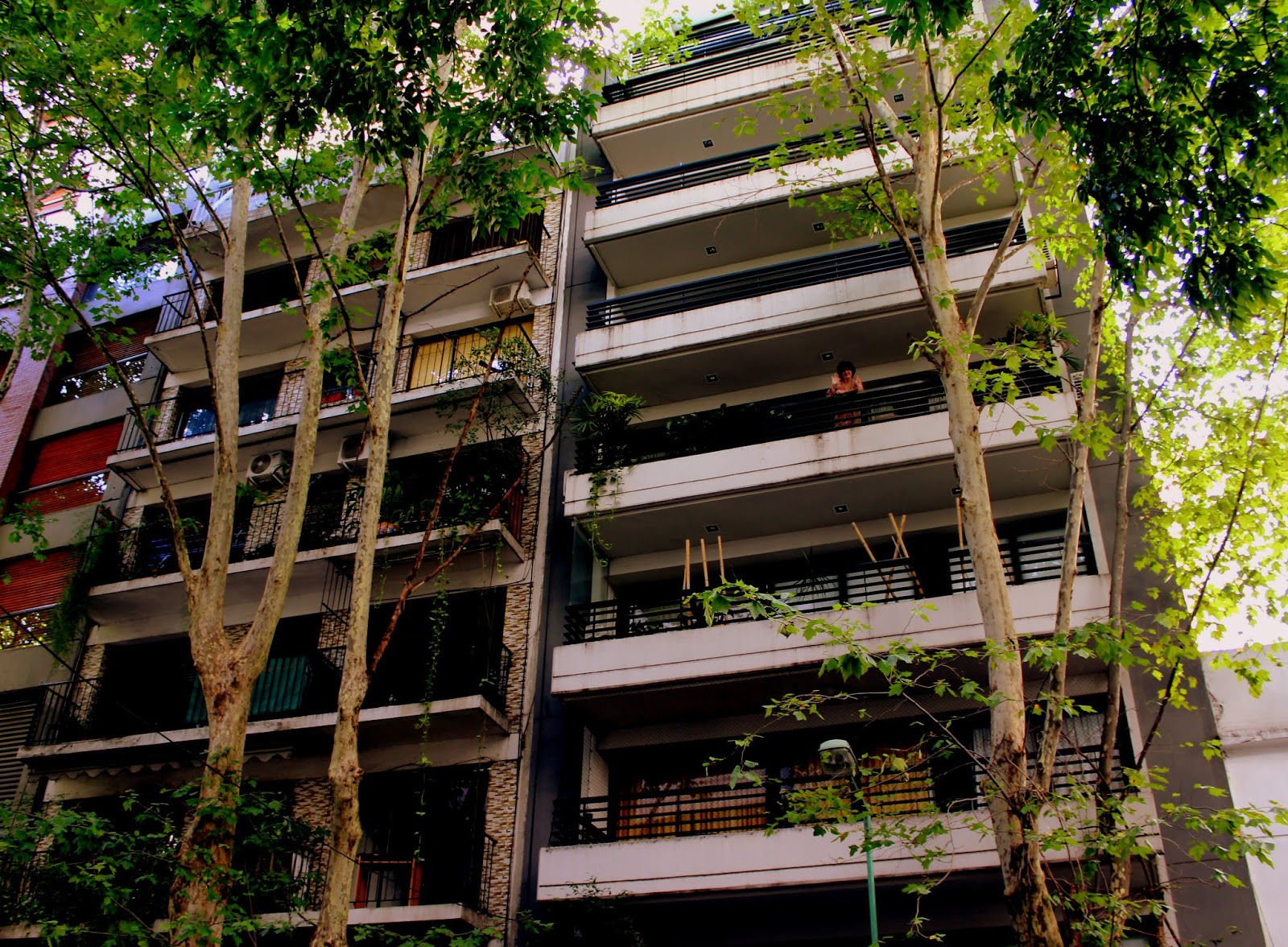
After three months in Dawson City, Yukon, Buenos Aires is something else again! We have gone from a community of 1400 to a mega-city of, by some estimates, 14 millions. The temperature when we left Dawson was minus 48.
Most days here in BA, the humidex is over 40. After just over two weeks in this amazing city some observations have formed. They will, I suspect, change over almost three months here, but for now here are some of the things we know so far, about Buenos Aires:
1. Traffic is hectic and driving lanes do not necessarily mean anything. When approaching an uncontrolled intersection, the larger vehicle often has the right of way. Or the driver who honks first. Or, let's both speed up and see what happens. Sometimes these rules apply to controlled intersections too.
2. Pedestrians do not have the right of way. Nor rights of any kind. It can be difficult to cross a busy street with cars going by you, around you and almost through you. Never, ever hesitate. Keep walking. Close your eyes if you have to, and keep walking. Later, much later, I will be offering courses in
Transcendental Panic for anyone planning to walk across busy BA streets.

3. Argentina has the worst rate of traffic related accidents and fatalities of any nation in South America.
4. There is a minimum of horn honking. It is usually a gentle warning of sorts; hardly ever in anger. In fact, in spite of the heat and the general confusion on the roads, anger is seldom seen. There is a certain civility to the whole thing which is quite refreshing compared to Metro Vancouver where "rage" is common place. This in a urban area with seven times the population of Vancouver.
5. Banks exist to take money. They do not exist to exchange currencies, nor to convert large bank notes into smaller bills. Unless you happen to be their customer and then, they might, possibly, for a fee, consider being of assistance.
6. Meat is plentiful and relatively inexpensive. It is also of high quality. While there are rumours of vegetarians existing in Argentina, and the possibility of vegetarian restaurants is expressed from time to time, neither appear visible in any form.
7. People are friendly, though reserved. Except in retail establishments where they delight in ignoring customers. Until you express a keen desire to actually, possibly, make a purchase. Then, consideration of assistance will be granted, and sometimes with a smile.
8. Cafes are everywhere and offer good service, and except in key "tourist" locations, excellent value. It is extremely pleasant to eat outside, either at a restaurant or on our balcony, every day. And we have the nicest balcony in Palermo.

9. People eat late. Lunches are often taken after 1:00 or 2:00. Many restaurants will close between 5:00 and 8:00 pm with most diners appearing after 9:00. If this sounds civilized, it's because it is. These rules apply to our balcony as well.
10. Except for patrons of Starbucks, and the company does have a few stores here, no one wanders around with a paper cup of coffee in their hands. In fact, in Buenos Aires, coffee is meant to be enjoyed while seated at a cafe. And never in a paper cup.
11. Garbage from homes, businesses and apartments gets piled up in large green bags at intersections where it is picked up later in the night. This can be unsettling if you are seated at an outdoor cafe in view of the garbage. Some parts of BA do have large bins at corners where the garbage can be deposited, but most neighbourhoods do not.
12. Before the garbage trucks come,
cartoneros appear to sort through the garbage for items of value. As recycling is not organised to any great degree, these citizens, often working in families, come to the same areas each night to open the garbage and seek out bottles, cardboard and whatever else might be of value. This too can be unsettling.
13. Sidewalks are in disrepair throughout all of BA. To say the footpath is uneven would be the grandest understatement. Sidewalks are a mine field of various holes, dog poop, piles of dirt and torn up tiles. If I have this much trouble what does a person in a wheel chair face? Or a blind person?
14. Mosquitoes flourish here, especially after a heavy summer rain.
15. Low-flush toilets
do not conserve water.

